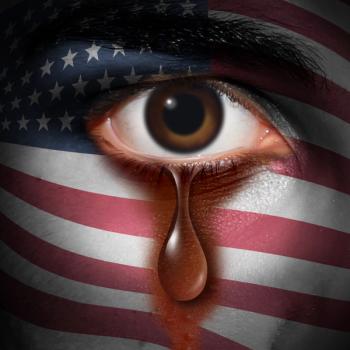
Reported High Rates Of Military Mental Illness Are Wrong And Dangerous
What harms are there in labelling (or rather often mislabelling) more than a quarter of our troops as mentally ill? The harms are numerous and potentially quite dangerous. . .
The headline reads:
The article goes on to offer alarming statistics: "The rate of major depression is five times as high among soldiers as civilians; intermittent explosive disorder, which results in episodes of extreme anger, is six times as high; and post-traumatic stress disorder was nearly 15 times higher than among civilians, the study found."
This would be pretty scary if true--but it isn't. Psychiatric epidemiology is done in a way that leads to systematic bias and inflated rates of reported psychiatric disorder. And there has also been systematic carelessness in how the results are misleadingly reported by the researchers and then passed on by the media.
The fatal (unacknowleged) flaw in the epidemiological studies arises from the fact that they are so expensive to conduct. As a cost containment measure, the thousands of interviews on which the diagnoses are based must be conducted by lay people, not by clinicians.
Having some psychiatric symptoms is part of the human condition and does not by itself indicate the presence of mental disorder. The boundary between the worried well and the psychiatrically ill is fuzzy; arbitrary, and subjective-- there is no biological test. It is easy to be reliable and accurate in diagnosing severe, clear cut disorders; impossible to be very confident about the mild ones that very likely aren't disorders at all.
Lay interviewers cannot make this call. They have no way of judging whether the symptoms reported are severe enough, persistent enough, and pervasive enough to qualify as mental disorder. Instead, they lump anyone with symptoms among the mentally disordered.
The rates reported by psychiatric epidemiology are therefore always inflated--sometimes radically. They are no more than upper limits, not true rates. The epidemiologic interviews should be seen as no more than screening tools, not able to render a true clinical diagnosis.
It is not surprising that many soldiers have some symptoms of PTSD and sadness. But this should not be taken to mean that they qualify for a clinical diagnosis of PTSD or Major Depressive Disorder. The epidemiologic approach is unable to confirm the clinical significance of the symptoms and to arrive at anything approaching a true rate of these diagnoses.
And the claims of high rates of Intermittent Explosive Disorder are particularly absurd. Intermittent explosive disorder, does not "result in episodes of extreme anger" --it just describes such episodes. Intermittent Explosive Disorder is a fairly meaningless and almost totally unstudied residual category that was included carelessly in DSM only to help clinicians who needed a diagnosis for the violent people who occasionally presented for care. The fancy sounding but essentially fake diagnosis should not lead to the stretched conclusion that all impulsivity and inappropriate violence exhibited by soldiers are signs they have a mental disorder.
What harms are there in labelling (or rather often mislabelling) more than a quarter of our troops as mentally ill? The harms are numerous and potentially quite dangerous:
• Most immediately, careless overdiagnosis in epidemiological clinical studies encourages careless overdiagnosis in clinical practice. When clinicians are misled into believing that mental disorder is ubiquitous and often missed in our troops, they develop a trigger-happy lowered threshold for making a diagnosis even when it doesn't exist.
• Careless diagnosis then leads to careless treatment. Rates of prescribing psychiatric drugs have skyrocketed as has polypharmacy--ie, the use of multiple, often interacting drugs, often in recklessly high doses. Several hundred troops die each year from accidental or deliberate overdoses of prescription drugs.
• When such a large percentage of troops gets mislabelled as mentally ill, the inaccurate and unfair stigma attaches not just to the mislabeled individuals but also to the entire combat force--and it follows them into later military and civilian life. Employers used to give preference to veterans; now they worry unnecessarily about their stability when hiring them.
• If the definition of mental illness includes many who are not really sick, the military and VA must badly misallocate resources. Those with real mental disorders who desperately need help are neglected; while those who would do better on their own receive what may be harmful treatment and misplaced stigma.
• A misdiagnosis of mental disorder may lead to an inappropriate provision of disability benefits. While this may benefit the individual in the short run, it often leads to real and unnecessary disabling in the long run.
Our troops deserve careful, not shotgun, diagnostic evaluation and a cautious approach to medication treatment. There should be much more attention paid to helping every returning soldier during the difficult transition out of combat zones and into ordinary military and civilian life. Soldiers should not need a mental disorder diagnosis before they can access the transitional resources that would help with this crucial adjustment.
The research reported is not just a waste of tens of millions of dollars better spent actually helping our troops-- it mischaracterizes them in ways likely to lead to even more over doses of prescribed medication and even more disadvantage in the job market.
The military is far off track in dealing with its mental health problems.
Newsletter
Receive trusted psychiatric news, expert analysis, and clinical insights — subscribe today to support your practice and your patients.














